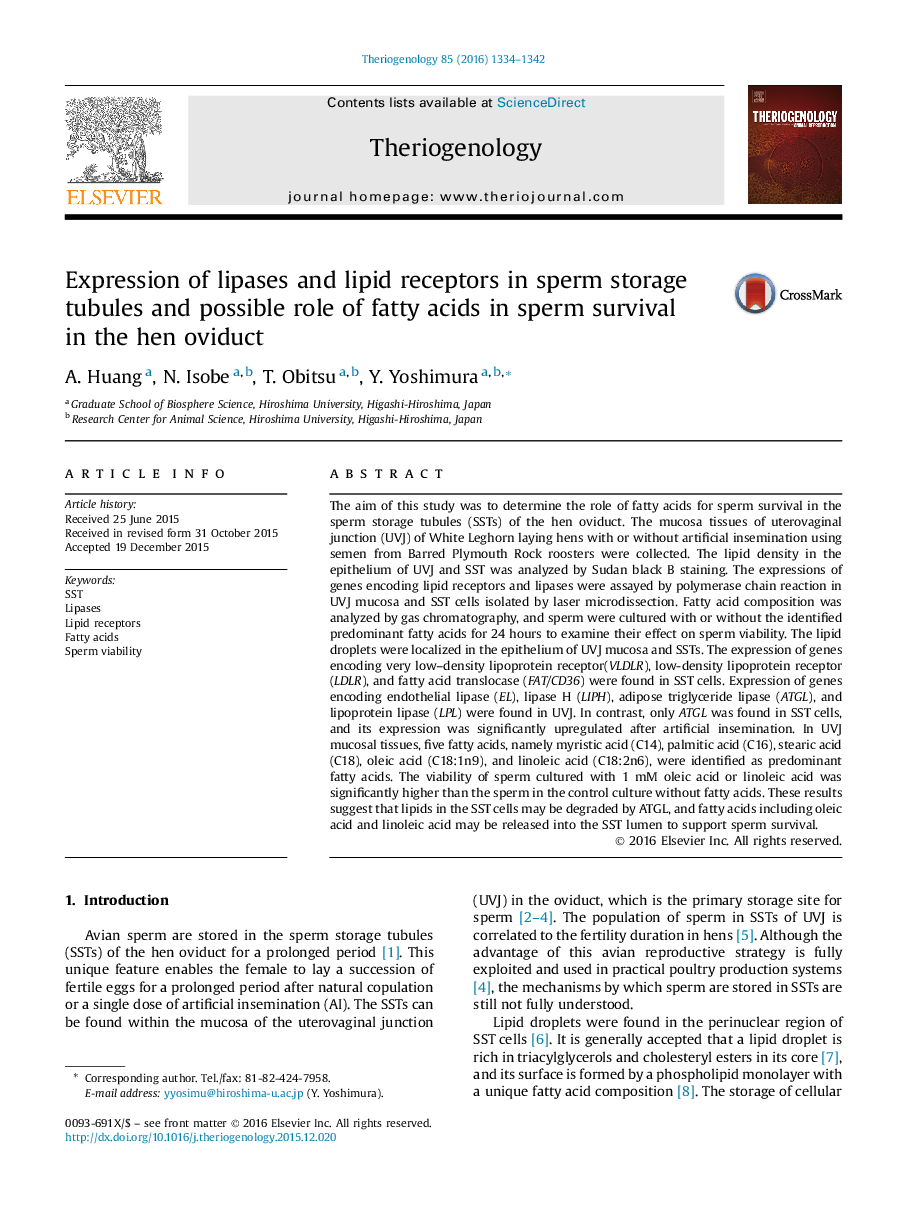| کد مقاله | کد نشریه | سال انتشار | مقاله انگلیسی | نسخه تمام متن |
|---|---|---|---|---|
| 2094822 | 1082053 | 2016 | 9 صفحه PDF | دانلود رایگان |
The aim of this study was to determine the role of fatty acids for sperm survival in the sperm storage tubules (SSTs) of the hen oviduct. The mucosa tissues of uterovaginal junction (UVJ) of White Leghorn laying hens with or without artificial insemination using semen from Barred Plymouth Rock roosters were collected. The lipid density in the epithelium of UVJ and SST was analyzed by Sudan black B staining. The expressions of genes encoding lipid receptors and lipases were assayed by polymerase chain reaction in UVJ mucosa and SST cells isolated by laser microdissection. Fatty acid composition was analyzed by gas chromatography, and sperm were cultured with or without the identified predominant fatty acids for 24 hours to examine their effect on sperm viability. The lipid droplets were localized in the epithelium of UVJ mucosa and SSTs. The expression of genes encoding very low–density lipoprotein receptor(VLDLR), low-density lipoprotein receptor (LDLR), and fatty acid translocase (FAT/CD36) were found in SST cells. Expression of genes encoding endothelial lipase (EL), lipase H (LIPH), adipose triglyceride lipase (ATGL), and lipoprotein lipase (LPL) were found in UVJ. In contrast, only ATGL was found in SST cells, and its expression was significantly upregulated after artificial insemination. In UVJ mucosal tissues, five fatty acids, namely myristic acid (C14), palmitic acid (C16), stearic acid (C18), oleic acid (C18:1n9), and linoleic acid (C18:2n6), were identified as predominant fatty acids. The viability of sperm cultured with 1 mM oleic acid or linoleic acid was significantly higher than the sperm in the control culture without fatty acids. These results suggest that lipids in the SST cells may be degraded by ATGL, and fatty acids including oleic acid and linoleic acid may be released into the SST lumen to support sperm survival.
Journal: Theriogenology - Volume 85, Issue 7, 15 April 2016, Pages 1334–1342
